"Bar Month" at OnMilwaukee is brought to you by Miller Brewing Company, calling Milwaukee home since 1855. For the entire month of March, we're serving up fun articles on bars, clubs and beverages – including guides, the latest trends, bar reviews, the results of our Best of Bars poll and more. Grab a designated driver and dive in!
Milwaukeeans are nostalgic people. As much as we love the hip, happening and new, we are firmly anchored to our roots, and we seem to be especially enamored of the city’s Germanic heritage.
One of the shrinking handful of places that embody that past is the Bavarian Bierhaus, 700 W. Lexington Blvd. in Glendale. Set off from the Port Washington Road strip by the freeway, the former Bavarian Inn is a sprawling complex, with the restaurant building surrounded by parking lots, soccer fields and a traditional outdoor biergarten, which comes alive each September for Oktoberfest.

The restaurant building dates to 1968, when the United Bavarian Societies, a then-25-year-old association of five German cultural groups, renamed itself United German Societies of Milwaukee and decided that its clubhouse – a former home on Port Washington Road, just north of where Kopp’s is located today – was insufficient for the association’s combined 700 members.
Glendale architect Edmund J. Schrang was hired to build a new home and he spent three weeks in Germany in 1966, snapping just short of 500 photographs of architectural details, many of which he used to pepper his project back home with "authenticity:"
The white stucco walls, the rustic oak trim, the balconies, the stones on the roof to mimic a similar style used in Germany to hold down roof tiles, the painted scenes throughout, the weighty fireplace, the shutters, the stained glass windows celebrating the Bavarian areas of Bayern, Garmisch, Lindau, Mittenwald and Munich.
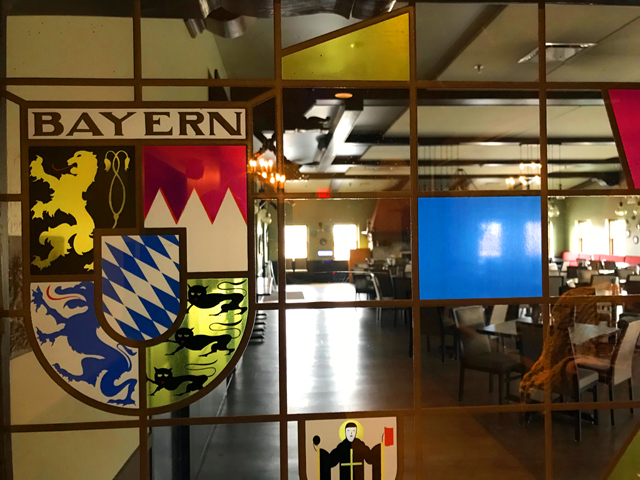
"The new building is 100 percent authentic," Schrang told the Milwaukee Journal. "If you were to pick up this building and put it down in the middle of Garmisch-Partenkirchen it would blend right in."
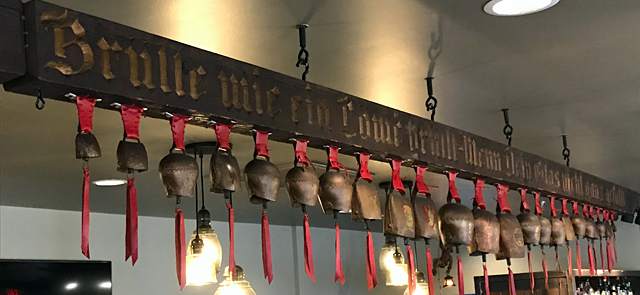
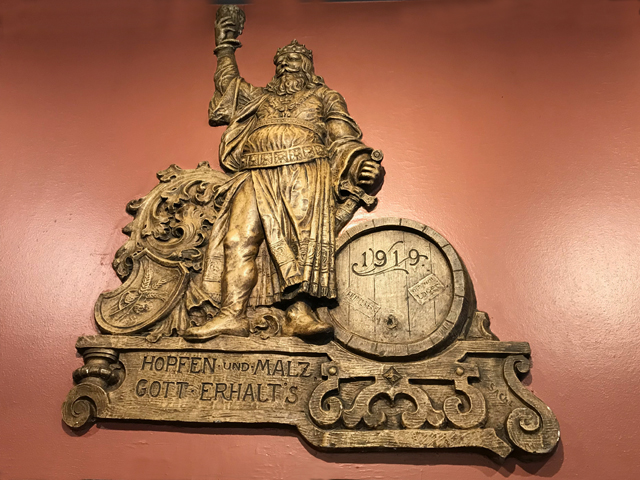
However, the Bavarian Inn closed in 2011 and five years later, it was renovated and reopened as the Bavarian Bierhaus, which shined up the place and installed a brewery system to bring the restaurant into the new millennium.
The place still exudes that classic German vibe, but it feels more modern. And the beer list is more than just lager and weissbier.
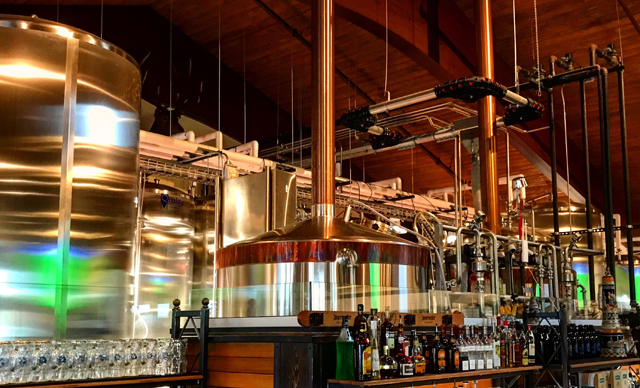
"Typically, we have 12 draft lines," says braumeister Nate Bahr. "Typically we have at least 10 beers on. We'll have a cider option. This Saturday we have all 12 lines. There are four beers we always have on."
Those four are the German classics: a helles lager, a dunkel, a hefeweizen, a light lager.
I asked Bahr if the solid Germanic vibe – and the name – of the Bavarian Bierhaus hems him in back in the brewery.
"You know, a little bit," Bahr says. "Those four are always on. But we have rotating seasonals like a Baltic porter and an oatmeal stout. I do have freedom to basically do whatever I want. But if it was all IPAs people wouldn’t like it."
The Friday fish fry means a packed house at the Bavarian Bierhaus ("it’s chaos in here, absolute chaos," according to Bahr) and, he says, that crowd wants the classics.
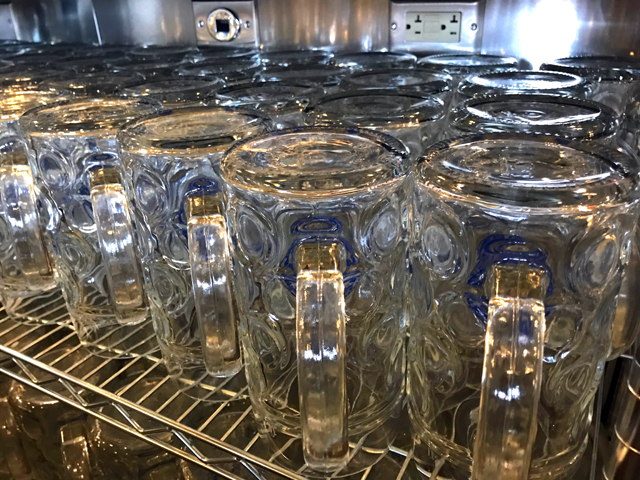
"You’ve got to appeal to both sides. But it’s kind of stupid to be a brewery in America (right now) and not have an IPA.
"Some new beers coming (include), one's called a ‘lager and a rye.’ It's kind of a spin on a traditional lager recipe. We use 20 percent rye, which makes it a little different. Then we have a maibock and a double IPL. We typically focus on traditional stuff because of the theme of the place. But we also do, we have a pale ale, an IPA, and a rye PL.
Depending on when you visit, you might also get to try a doppelbock and a smoked amber lager, alongside those stouts, porters and IPAs Bahr mentioned.
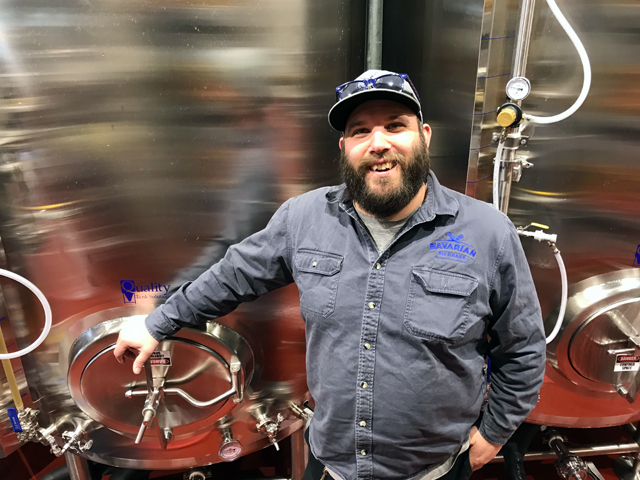
Like all good brewers, Bahr, who got his start as a home brewer before getting a job at Lakefront Brewery ("I was really super lucky to be able to work for Lakefront, especially without any experience," he says) likes to tinker, and so does his assistant Mike Biddick.
"We like to experiment using the lager yeast that we use for the traditional stuff in the IPA styles, which makes them a lot different than a lot of the other IPAs in the area," Bahr says.
"Mike maintains one draft line himself. He likes rye a lot, so we did a black rye IPL. Now we're going back to more like the spring version of it, which is more like red. Yeah, we like to play both sides of the coin."
Bahr has also done some collaborations, including with Gordon Lane out at Biloba Brewing in Brookfield, and at Bavarian with the brewers from Broken Bat in the Third Ward. He says he plans to do more.
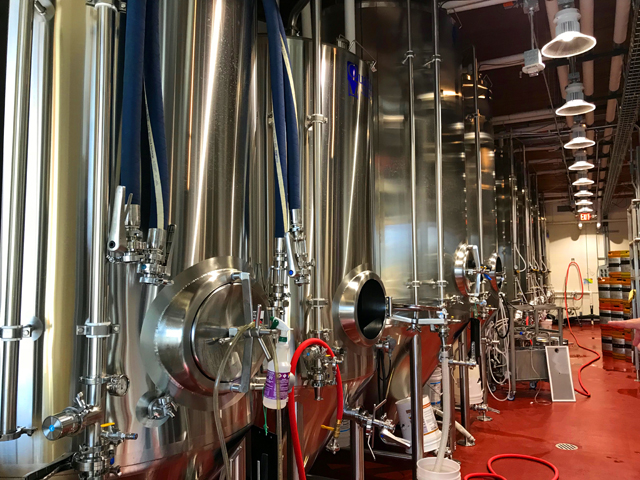
The brewery was built with a capacity to brew about 5,000 barrels annually, but Bahr says at the moment – though its growing – Bavarian Bierhaus sold about 900 barrels last year, including about 200 that went to sate the demands of the Oktoberfest crowd outside.
"We do 15 barrel batches, typically," he says. "We can go a little bit smaller, but we like to go at least 15 because you get a better boil out of it. It's a steam kettle, so if you don't bury the jackets it doesn't work as well as direct fire.
"We basically do a beer a day. We're not necessarily brewing every day but there's plenty of other stuff to do, for sure. We basically run one beer through the system a day, but we can have eight different beers fermenting. We have another eight serving tanks on the other side. We don't keg off all of our beers. Those are set, those are hooked up to service the bars, which is pretty cool. The less time you handle beer the more likely you are to not contaminate it, or oxidize it. We like to leave it in one place if we can."
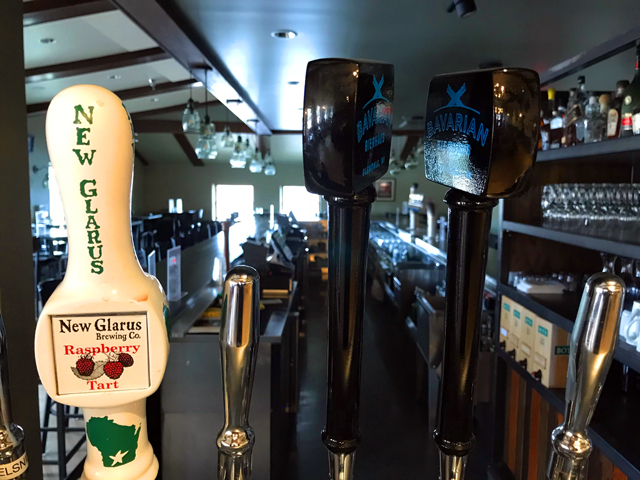
Because there is another bar on the far side of the building, these serving tanks are connected to that bar, too.
When I visited Good City Brewing, one of its co-owners, Andy Jones, told me that he worked as a consultant on the installation of the brewery at Bavarian Bierhaus.
"I knew him from Lakefront," Bahr says. "He was working with this company as a go-between between the investors and Quality Tank Solutions who makes all this stuff. They're in Oconomowoc. They have another larger facility in Marshfield, which is pretty cool. He's essentially like a brewer/engineer-type guy, so he came up with how many tanks we need and what sizes, and considering that we do a lot of lagers and those take a lot longer than ales to make, or to ferment, that's why we have so many fermenters, so we don't get bogged down.
"It's pretty huge for this little brewery. There is a lot of equipment back there. We have a lot of capacity. It's really nice to have the extra tank space. Like for the Maibock, we made, I think, in January; we're able to lager in effectively for over six weeks and just let it sit in the tank and then we can still use all the other ones."
Bahr says that even with the popularity of IPAs and other brews, they are not the customer favorites here.
"Probably the helles, the dunkel, the hefeweizen ... the traditional ones," he says. "You get a lot of people in here just wanting to drink beer that ‘tastes like beer.’ You want a liter of it. You don’t want a liter of IPA. You’d have to drink it pretty quickly."
I ask him what he likes to brew best of all and, perhaps because I’m a neophyte, the answer surprises me.
"I really like making lagers because it is a more refined beer," Bahr says. "I think lagers really show the brewery's true colors because you're not hiding behind a ton of hops. You're essentially fully exposed.
"When they taste good, they taste really good and they take a long time to make and it's always really kind of rewarding when you've carbonated and it just tastes so good. It's good pat on the back. There is so much complexity to it that I think people kind of overlook the cleanness of it. If you mess something up, people are going to taste it."
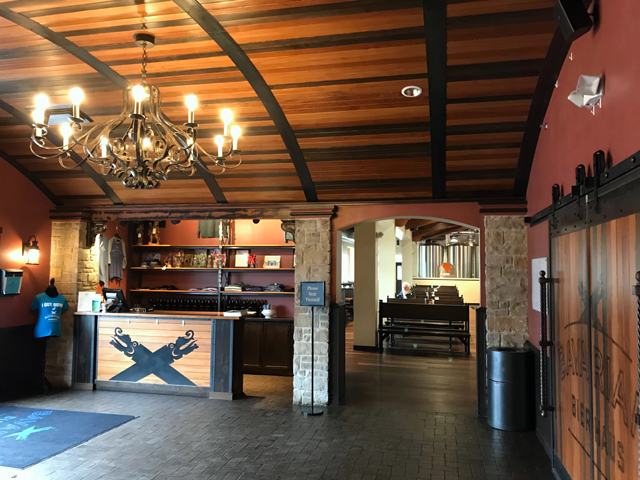
Despite the Friday night chaos – or perhaps because it serves up an eager crowd – Bavarian offers free tours from 4:30 until 6:30 p.m. that day.
Bahr and Biddick lead the tours, which last about half an hour and include free tastings and discounts on flights. No reservations are required; just show up.
"They check in with the bartenders and then everyone kind of piles up right here in the corner and we'll come out and grab them and take them in," Bahr says.
"It’s more people from the area, but a little bit of everybody. We get a lot of people from the North Shore coming down here, as far as Sheboygan. We're the only place around here that is offering something like this. So we do get a good draw for the tours. It ranges, we get everyone from the mid 20s to up in their 60s."
Bahr says that the tours at Bavarian are not like tours at a place like Lakefront.
"Lakefront has that whole tour aspect going and those guys are like comedians and they have their schtick and their routines," he says. "I'm just going to tell you how we make beer, because I'm a brewer not a tour guide. We get a lot of people coming in for tours. It's good for business."
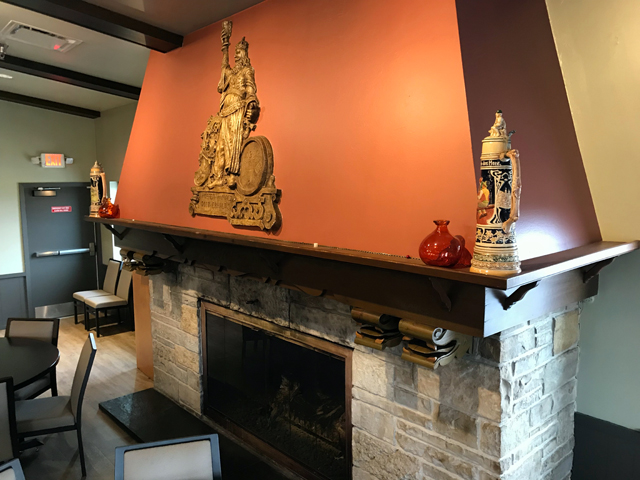
Before I go, I ask Bahr about a story that Andy Jones at Good City told me about building the brewery at the old Bavarian Inn.
The building is up on a hill and, Jones told me, engineers were concerned about the capacity of that hill to bear the weight of the brewery equipment.
This despite the fact that in 1968, the Journal reported that the more than 5,000-square foot hall had "a floor designed to withstand 500 pounds of stress per square foot to accommodate the vigorous, foot slapping dance known as the schuhplattler."

Jones said that in order to shore up the hill beneath the western end of hall, soil was removed and replaced with foam.
"Yeah, so the whole flooring that it's in there now, they had to dig down six feet, or something like that, underneath the old floor and I remember seeing it," Bahr says. "It was just a big pit with a ton of rebar like twisted together in it. Then they filled it with this foam and then six feet of concrete."
Foam below to support the foam above, I guess.
Born in Brooklyn, N.Y., where he lived until he was 17, Bobby received his BA-Mass Communications from UWM in 1989 and has lived in Walker's Point, Bay View, Enderis Park, South Milwaukee and on the East Side.
He has published three non-fiction books in Italy – including one about an event in Milwaukee history, which was published in the U.S. in autumn 2010. Four more books, all about Milwaukee, have been published by The History Press. A fifth collects Urban Spelunking articles about breweries and maltsters.
With his most recent band, The Yell Leaders, Bobby released four LPs and had a songs featured in episodes of TV's "Party of Five" and "Dawson's Creek," and films in Japan, South America and the U.S. The Yell Leaders were named the best unsigned band in their region by VH-1 as part of its Rock Across America 1998 Tour. Most recently, the band contributed tracks to a UK vinyl/CD tribute to the Redskins and collaborated on a track with Italian novelist Enrico Remmert.
He's produced three installments of the "OMCD" series of local music compilations for OnMilwaukee.com and in 2007 produced a CD of Italian music and poetry.
In 2005, he was awarded the City of Asti's (Italy) Journalism Prize for his work focusing on that area. He has also won awards from the Milwaukee Press Club.
He has been heard on 88Nine Radio Milwaukee talking about his "Urban Spelunking" series of stories, in that station's most popular podcast.





